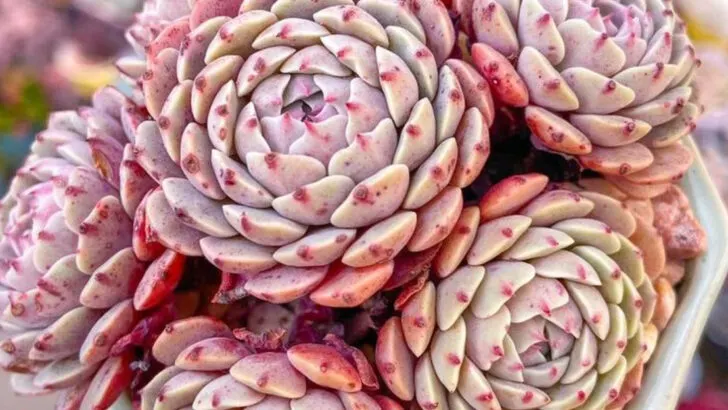Just because you’re saving water doesn’t mean your garden has to look sparse or dull. In fact, some of the most vibrant, sculptural, and eye-catching plants are the ones that thrive on neglect—and barely need a sip once established.
Whether you’re dealing with drought, sandy soil, or simply want a lower-maintenance garden this summer, choosing the right plants can make all the difference. These low-water champions don’t just survive—they shine, offering bold textures, seasonal color, and year-round structure.
From heat-loving perennials to colorful succulents and elegant grasses, these 20 low-water plants prove you can keep your garden beautiful without constantly dragging out the hose. Think climate-smart choices that are easy on your schedule and your water bill.
Aloe Vera

Not just a plant, Aloe Vera is a legend in the world of succulents. With its green, fleshy leaves, this plant is not only drought-tolerant but also a great remedy for sunburns. Its thick leaves store water, enabling it to thrive in dry conditions. Place it in a bright spot, and watch it flourish with minimal care. Aloe Vera’s resilience makes it a perfect choice for beginner gardeners. Did you know? Aloe Vera has been used for medicinal purposes for over 6,000 years. Talk about ancient wisdom!
Lavender
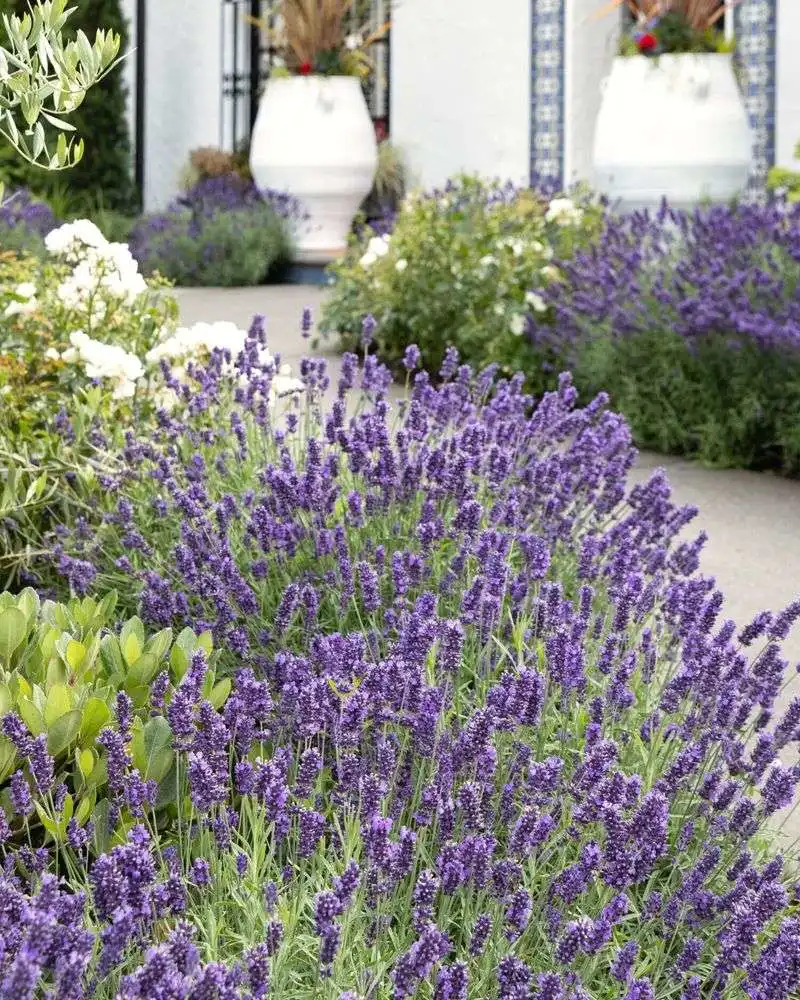
The scent of Lavender is enough to transport you to a serene meadow. With its aromatic purple blooms, Lavender is a classic favorite. This Mediterranean native prefers sunny spots and well-drained soil. Once established, it requires little watering, making it ideal for low-water gardens. Not only does it add a splash of color, but it also attracts pollinators. A fun fact: Lavender was used in ancient Roman baths for its soothing fragrance. Imagine soaking in such luxury!
Sedum
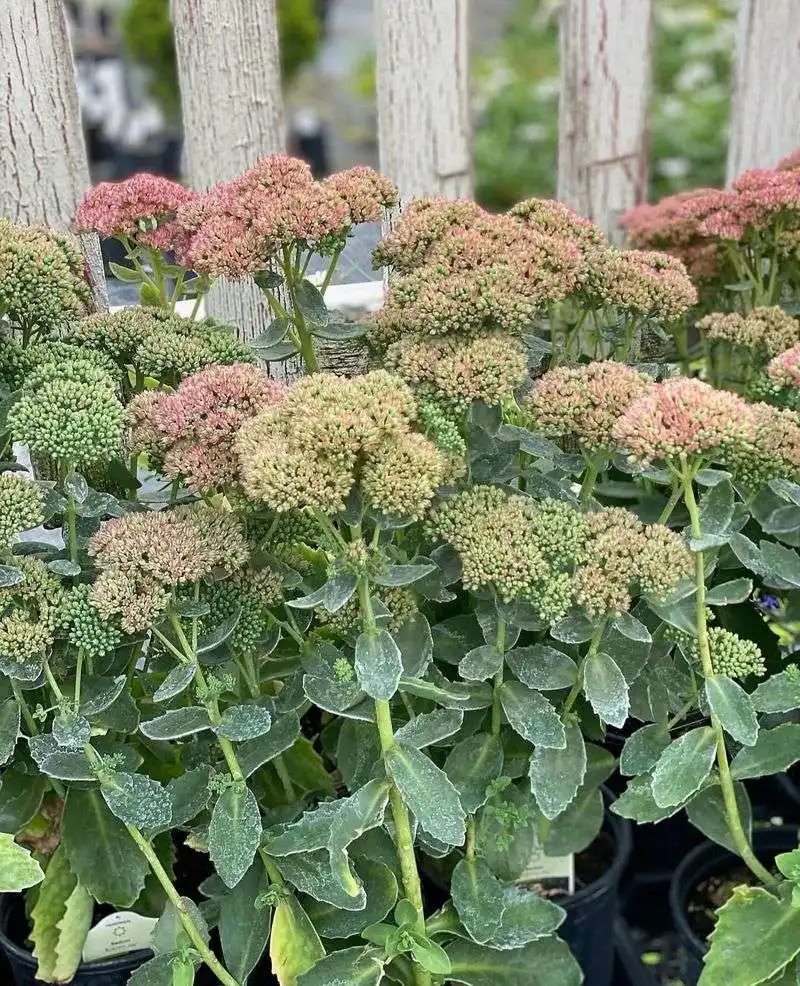
Sedums are like the reliable friends of the plant world. Known for their fleshy, water-storing leaves, these plants are champions of drought resistance. They come in a variety of shapes and colors, from deep green to vibrant reds. Sedum’s star-shaped flowers are a delight for the eyes and a treat for pollinators. These hardy plants can thrive in poor soil, making them versatile additions to any garden. Did you know? Sedum is often used in green roofs for its resilience.
Agave
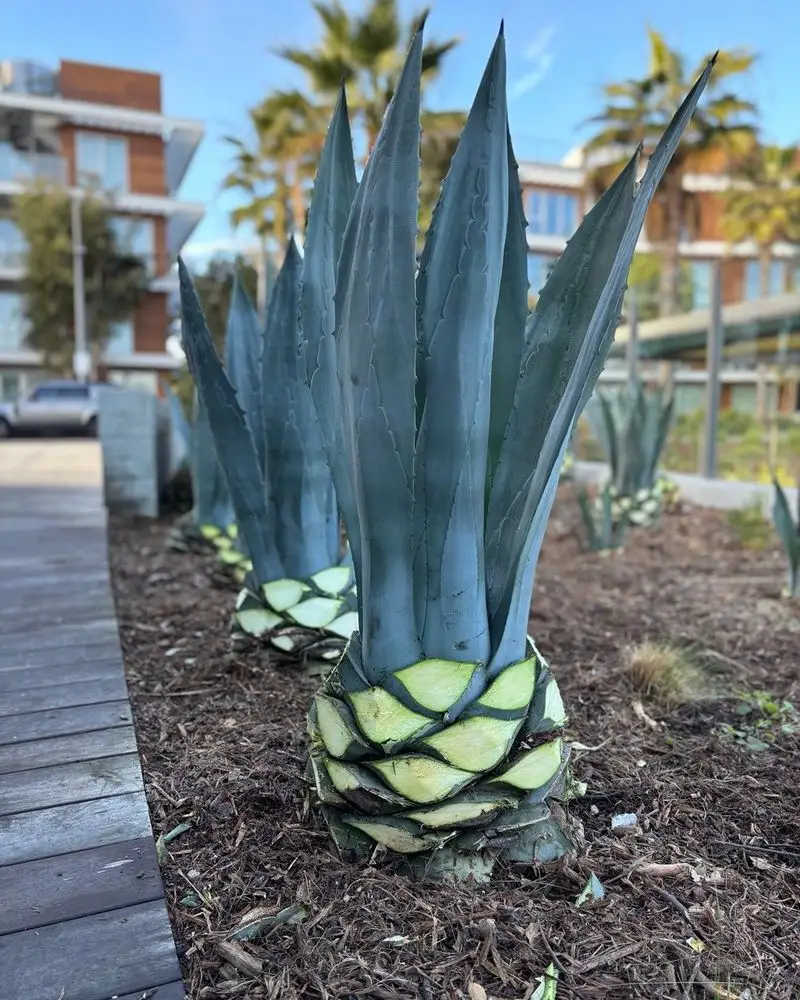
With a dramatic flair, Agave steals the spotlight in any landscape. Its wide, spiky leaves are not just for show; they play a crucial role in water conservation. Agave is incredibly drought-tolerant, thriving in dry, arid conditions. This plant demands little attention but offers impressive architectural beauty. Agave’s adaptability makes it a favorite in xeriscaping. A quirky tidbit: Agave is used to make tequila, adding a touch of fun to its impressive resume!
Russian Sage

Russian Sage dances in the breeze with its airy purple flowers and silver-gray foliage. This plant thrives in full sun and dry conditions, making it a staple in drought-tolerant gardens. It blooms late in the season, providing color when other plants have faded. Russian Sage is loved for its ability to attract bees and butterflies. A historical note: Russian Sage was named after the Russian general who discovered it in the 19th century. Who knew gardening had such intriguing tales?
Yarrow

Yarrow brings a splash of sunshine to any garden with its bright yellow clusters. This resilient plant thrives with little water once established. Its delicate-looking flowers are surprisingly tough, attracting beneficial insects. Yarrow’s feathery foliage adds texture to landscapes, making it a favorite among gardeners. Fun fact: Yarrow has been used for centuries in traditional medicine to heal wounds. Talk about a plant with history and charm!
Echeveria
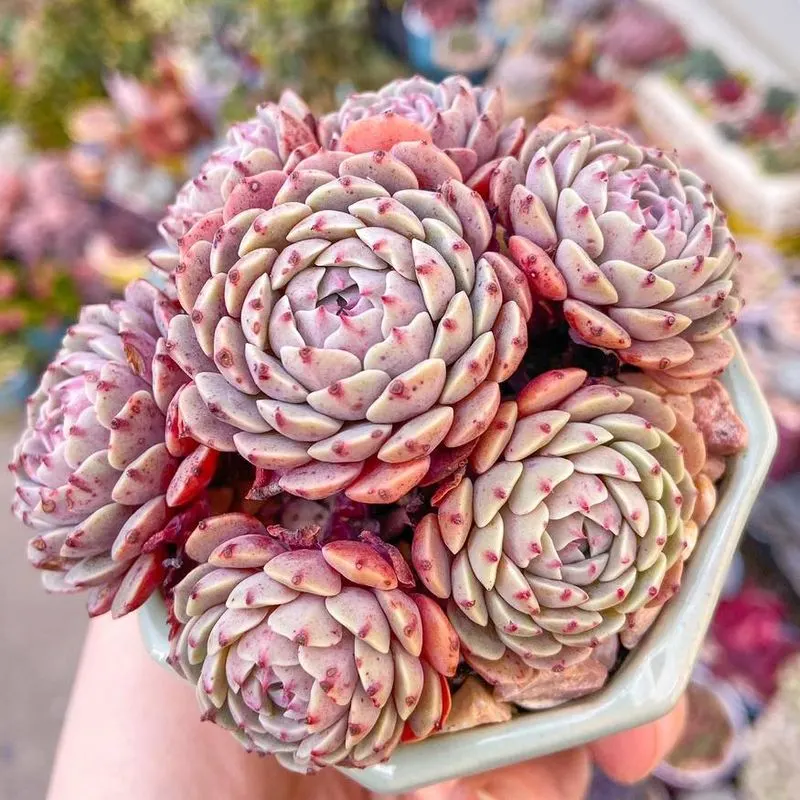
Echeveria, with its rose-like allure, is a jewel among succulents. Its rosette-shaped leaves come in an array of colors, from green to pink. Known for storing water, Echeveria thrives in sunny, dry spots. This low-maintenance plant is perfect for adding elegance to rock gardens or containers. A whimsical tidbit: Echeveria is named after Atanasio Echeverría, an 18th-century botanical artist. A plant with artistic roots indeed!
Rosemary
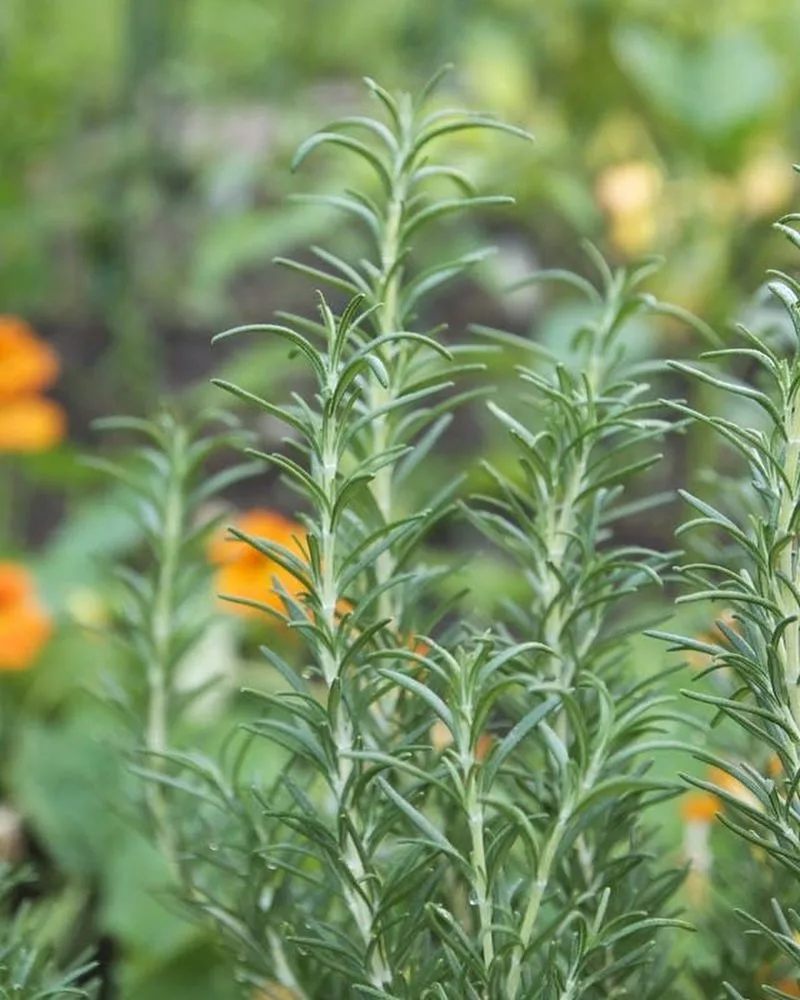
Rosemary, with its aromatic needle-like leaves, is more than just a culinary herb. This hardy plant thrives in well-drained soil and full sun. Once established, it requires minimal watering, making it a staple in drought-tolerant gardens. Rosemary’s blue flowers add a delicate touch, attracting pollinators. Did you know? In ancient Greece, Rosemary was believed to improve memory. A fragrant plant with a touch of wisdom!
Bougainvillea
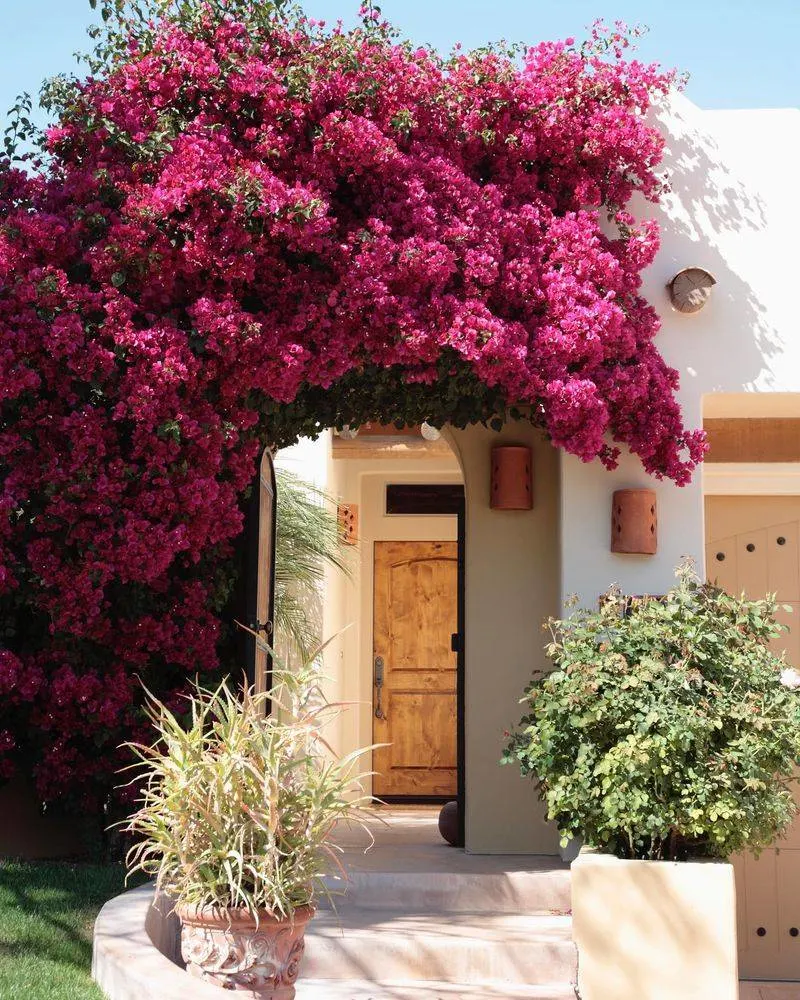
Bougainvillea brings a burst of color with its vibrant bracts that cascade beautifully. This plant thrives in warm climates and can withstand dry conditions once established. Its dramatic display makes it a popular choice for adding flair to fences and trellises. Bougainvillea is a sun-lover, flourishing with minimal care. A fun fact: The colorful ‘flowers’ are actually modified leaves, with the true blooms being small and white. Nature’s clever disguise!
Salvia
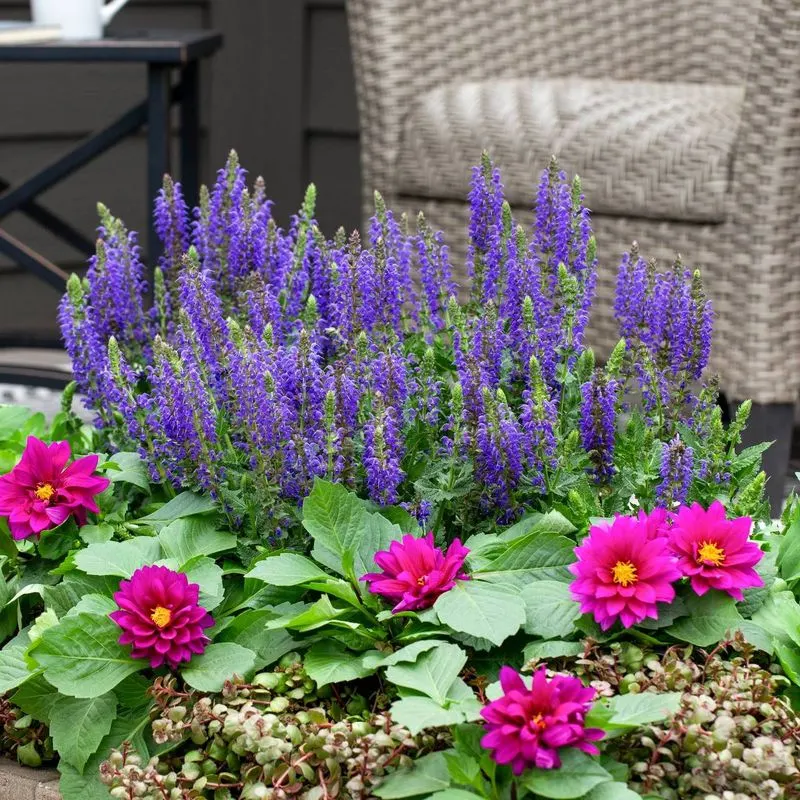
Salvia stands tall with its spikes of purple blooms, adding grace to any garden. This plant loves the sun and well-drained soil, thriving with little water. Salvias are known to attract bees, butterflies, and hummingbirds, offering a lively garden scene. A historical nugget: Salvia’s name comes from the Latin ‘salvare,’ meaning ‘to heal,’ reflecting its traditional medicinal uses. A plant that heals and decorates!
Coneflower

Coneflowers are perennial favorites, renowned for their resilience and vibrant hues. With pink petals and a spiky orange center, they brighten gardens with ease. Coneflowers thrive in full sun, requiring minimal water once settled. Their long-lasting blooms attract butterflies, making them a delight for nature lovers. A quirky fact: Coneflowers are also known as Echinacea and have been used in herbal remedies for centuries. A garden classic with a medicinal twist!
Verbena
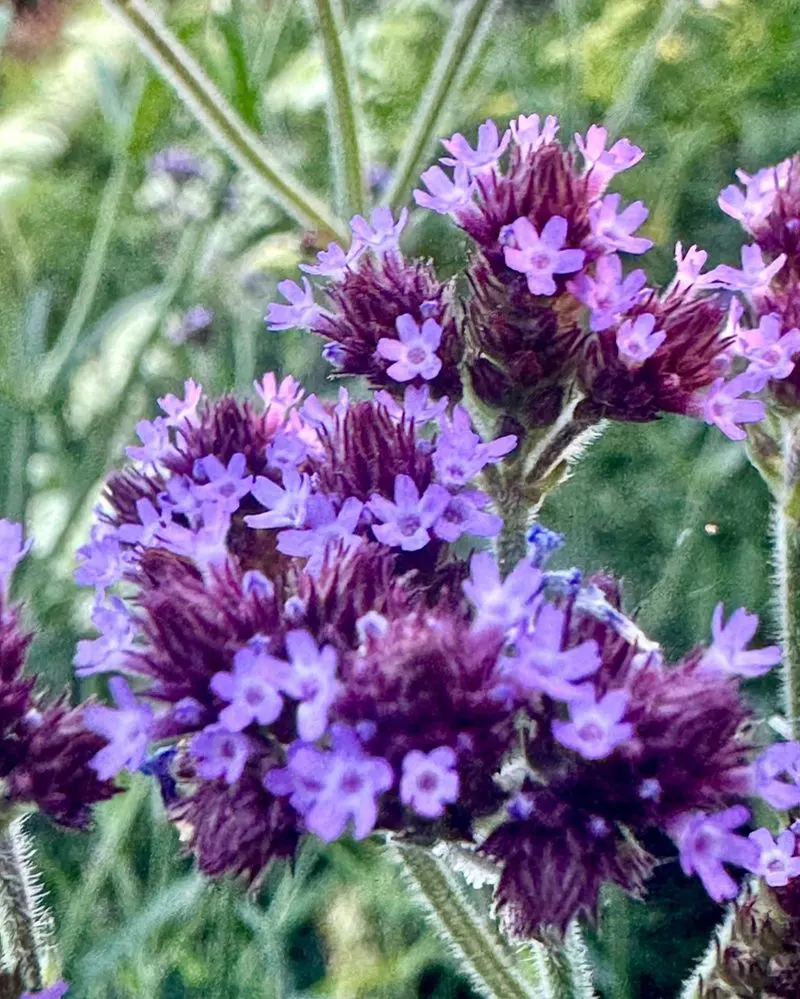
Verbena’s clusters of small purple flowers bring a touch of enchantment to gardens. This plant loves the sun and is highly drought-tolerant once established. Verbena’s continuous blooming adds consistent color, making it a favorite among gardeners looking for low-water options. A historical snippet: Verbena was considered a sacred herb in ancient times, used in religious ceremonies. A plant steeped in mystique and beauty!
Penstemon
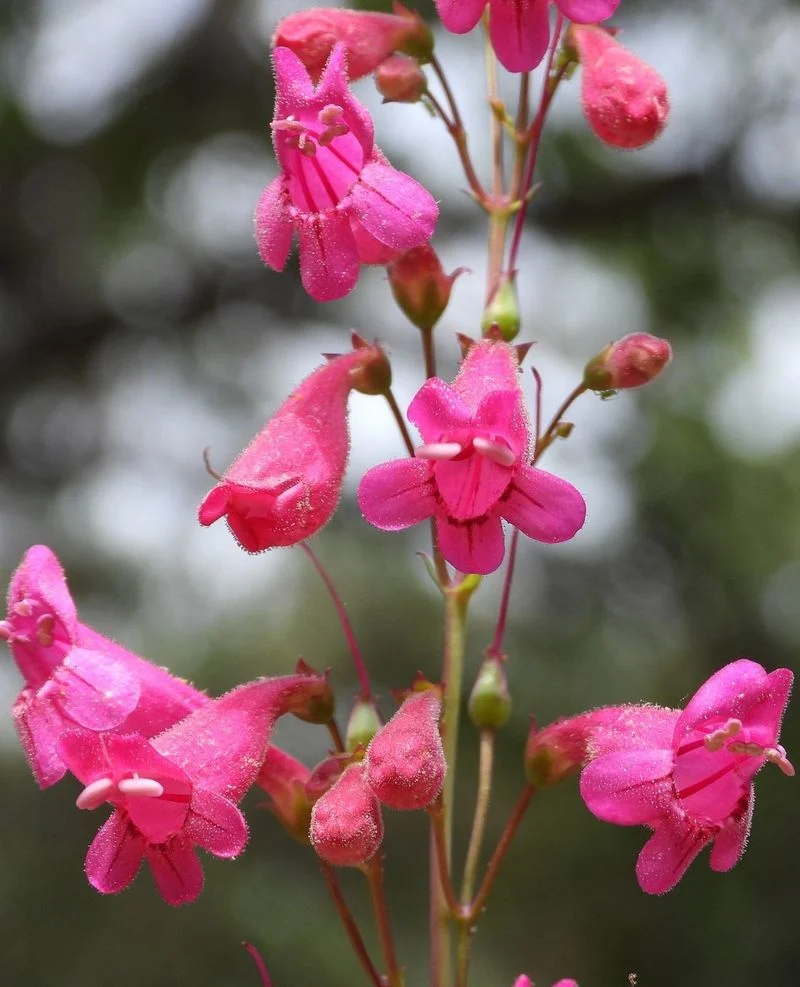
Penstemon, with its tubular red flowers, is a magnet for hummingbirds. This North American native thrives in sunny locations with well-drained soil. Once established, it requires little watering, making it perfect for water-wise gardens. Penstemon’s vibrant blooms add drama and movement to landscapes. Did you know? Penstemon is sometimes called “beardtongue” due to the stamen resembling a hairy tongue. A quirky name for a standout plant!
Cacti
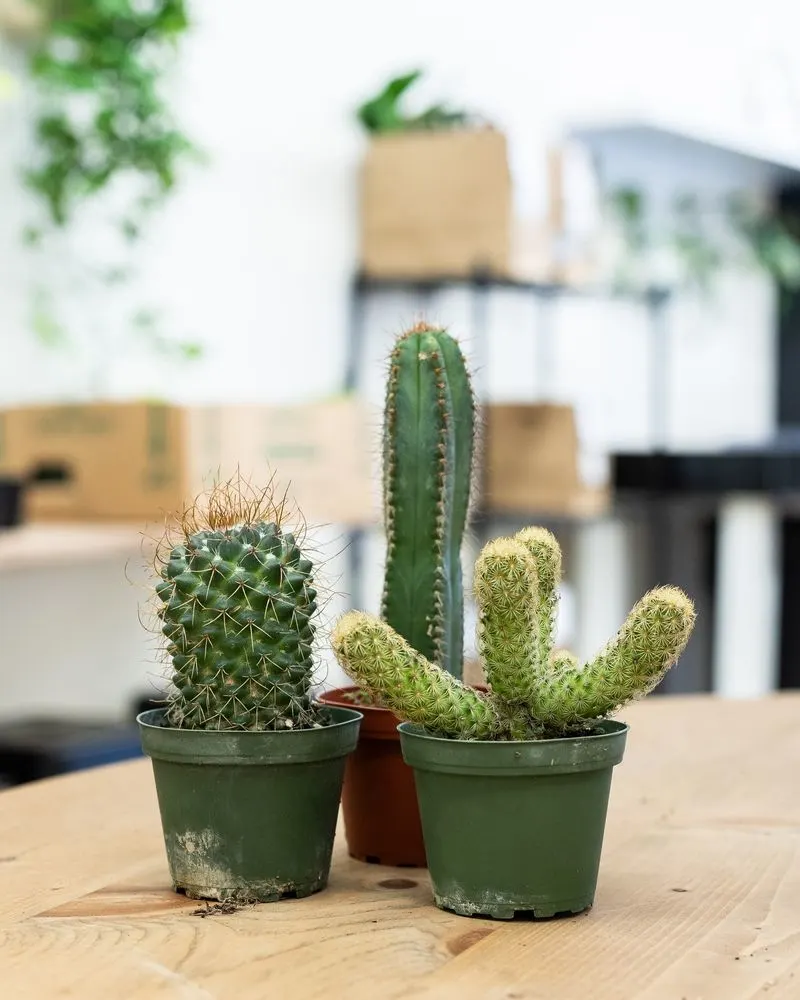
Cacti are the quintessential low-water plants, thriving in harsh, arid conditions. With their unique shapes and sizes, cacti offer endless design possibilities. They store water in their thick, fleshy pads, surviving long periods without rain. Cacti are perfect for those looking to add a touch of the desert to their gardens with minimal effort. Fun fact: Some cacti can live for hundreds of years, standing the test of time. Nature’s desert survivors!
Blue Fescue
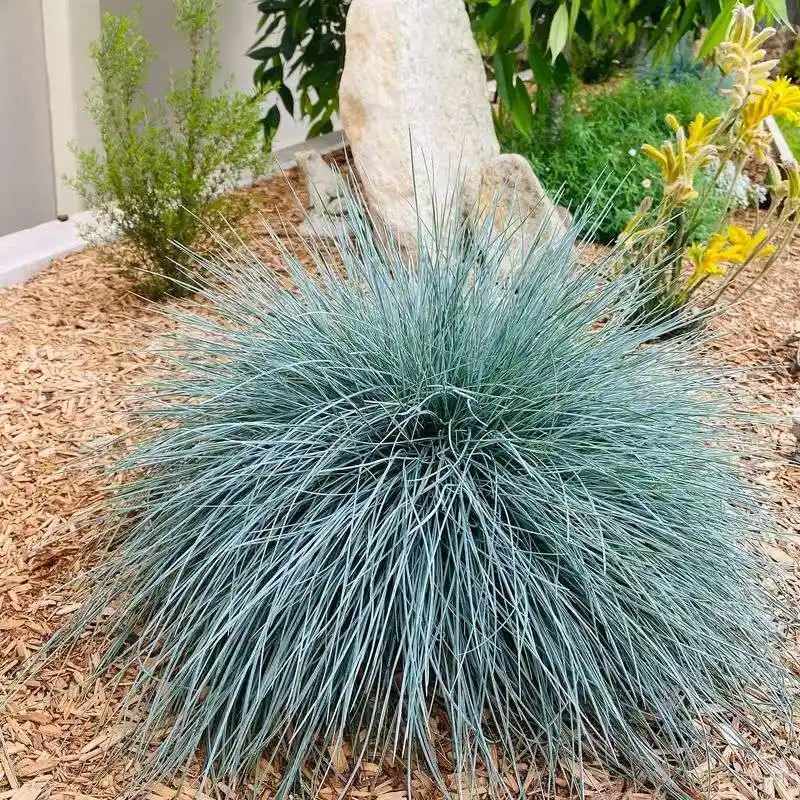
Blue Fescue is a charming ornamental grass with blue-green tufts that sway gracefully. This plant thrives in full sun and is highly drought-tolerant, making it a popular choice for ornamental gardens. Blue Fescue’s fine texture adds contrast and movement to landscapes. Did you know? This grass is often used in urban landscapes for its low maintenance and visual appeal. A versatile and stylish choice for modern gardens!
Lamb’s Ear
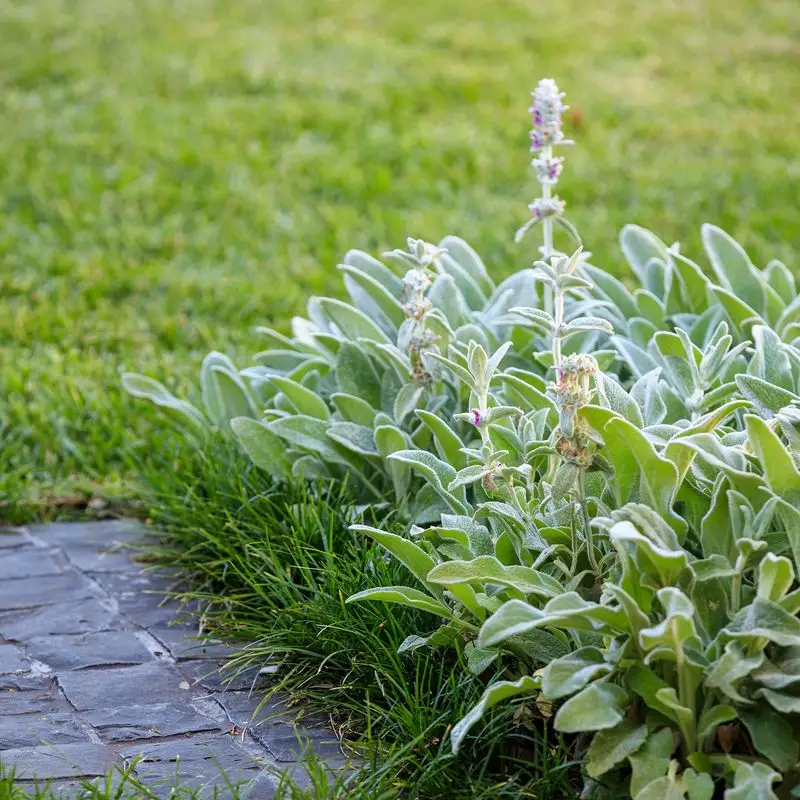
Lamb’s Ear captivates with its soft, silvery leaves that invite a gentle touch. This plant thrives in sunny, dry spots, requiring minimal water once established. Its velvety foliage adds a unique texture to gardens, making it a favorite for borders and ground cover. A fun fact: Lamb’s Ear is often used in children’s gardens for its tactile appeal. It’s a plant that delights both young and old with its softness.
Stonecrop
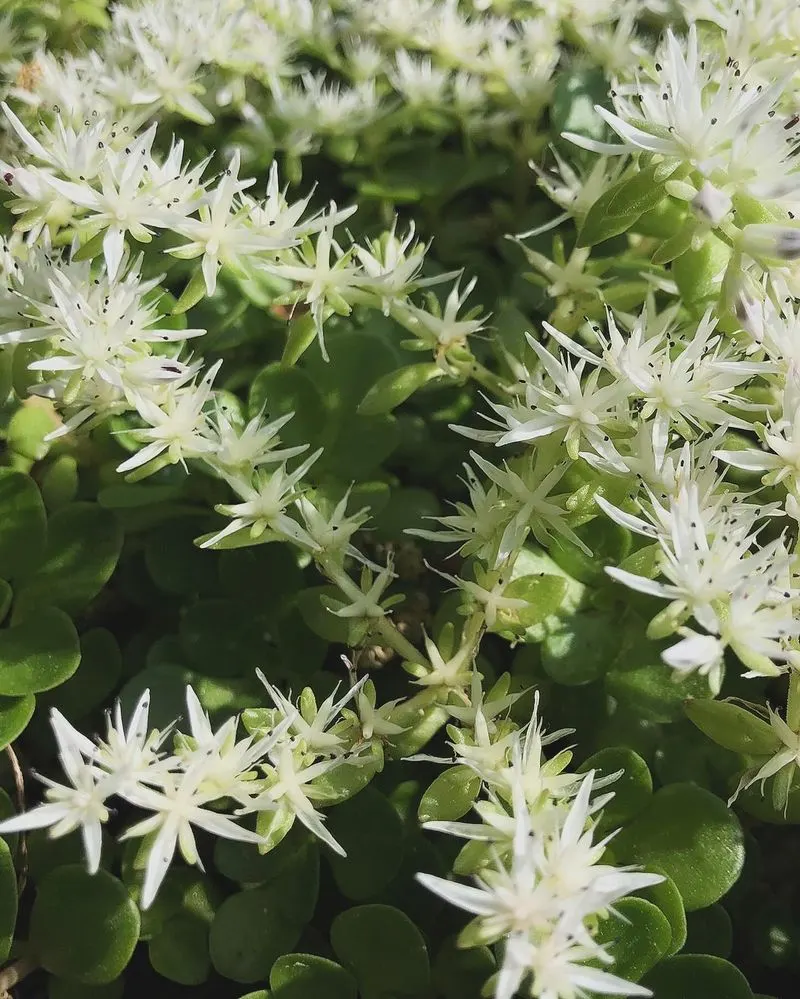
Stonecrop, with its clusters of small, star-shaped flowers, is a versatile succulent. This plant thrives in rocky, well-drained soil and requires minimal water. Stonecrop’s vibrant colors range from green to red, adding interest to any garden. It’s an excellent choice for rock gardens or as ground cover. Did you know? Stonecrop is also known as Sedum, a testament to its hardiness and adaptability. A resilient and colorful garden companion!
Gaillardia
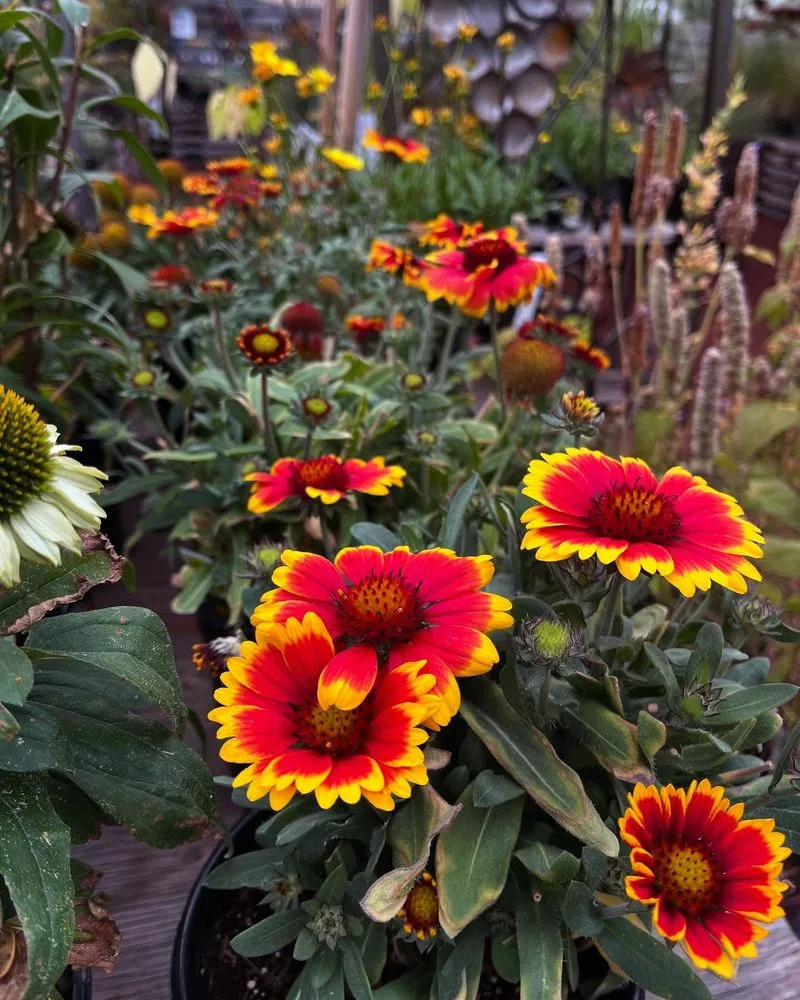
Gaillardia, also known as Blanket Flower, dazzles with its red and yellow daisy-like blooms. This plant thrives in full sun and poor soil, requiring minimal water. Gaillardia’s vibrant flowers attract butterflies and add a cheerful touch to gardens. A quirky tidbit: The name “Blanket Flower” comes from the plant’s resemblance to Native American woven blankets. A colorful and cultural addition to any landscape!
Yucca

Yucca commands attention with its spiky leaves and tall, dramatic flower stalks. This plant thrives in arid environments, requiring little water to survive. Yucca’s architectural presence makes it a striking addition to xeriscapes and desert gardens. Did you know? Yucca is a symbol of sturdiness and adaptability, often used in traditional practices by indigenous peoples. A plant that embodies resilience and strength!

